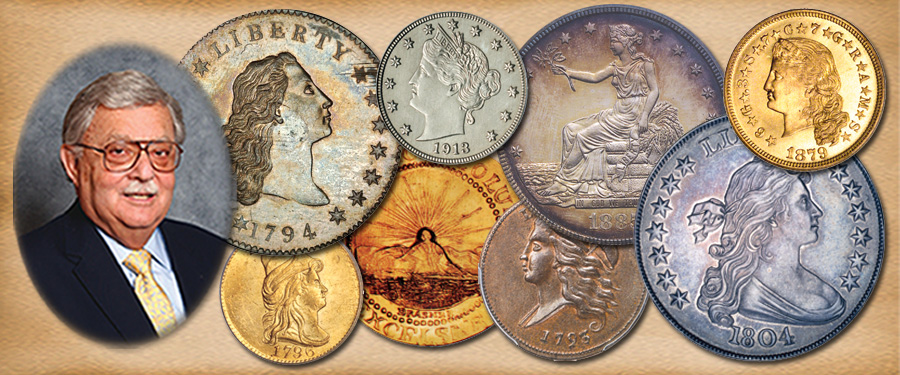
Various factors can cause or affect rarity. Earlier I wrote about R.L. Miles, Jr. who had a desire to own as many 1914 and 1915 Proof half dollars as he could. He personally accumulated hundreds of each date! So while he was collecting these together they were considered a rarity, but when he sold them all they became more common.
Keeping this in mind let’s review what the Hunt Brothers did from the mid 1960s until about 1981. First they bought up silver, mostly in bars, and drove the market from $1.29 to nearly $4 per ounce as they kept bidding in quantity on the precious metal markets and even traded on future markets. The Hunt’s were billionaires and felt they could control the silver market.
At the same time they started to accumulate Silver Certificates in huge quantities and were able to exchange lots of $10,000 in currency for silver from both the U.S. Assay offices and the Treasury. A hunt began to find Silver Certificates that had been turned into banks and sell them at a premium to the Hunt Interests. These purchase were all legal until the government would not redeem silver certificates for silver ingots in the late 1960s.
Next the Hunts turned to silver coins, primarily of the United States. In 1964, due to advancing silver prices, the U.S. government had stopped making dimes and quarters out of silver. The new composition was more low-cost metal and there was no benefit to melting them down for their metal content. From 1965 to 1970, the Mint struck half dollars in a composition composed of only 40% as opposed to the earlier coins prior to l965 that were struck in 90% silver. In this way they tried to maintain some intrinsic value in these larger coins.
As silver rose in price, dealers and traders started buying up dimes, quarters, half dollars and silver dollars from 1964 and before, primarily 20th century issues, in order to melt them for their silver value. Though there was no law about melting U.S. coins in existence at the time, the Mint complained and tried to use enforcement of restrictions on "mutilation" of silver coins to stop the melting, especially from 1967 to 1969. However, as it was not a law, they failed and the melting continued.
During that period, the Hunt’s buying all they could drove the price up each year, and the accumulation of silver coins became more hectic. Coins that were stored in banks, dresser drawers, piggy banks and elsewhere were turned into dealers at premiums that started as low as two to three times face value, but by 1980 could be as much as 20 to 30 times face value. Melting was done on such a huge scale that there was concern that there would be far less silver coins in the future to collect or use as a store of wealth.
Among the coins melted were Barber dimes, quarters and half dollars, Morgan and Peace dollars, Mercury and Roosevelt dimes, Liberty Standing and Washington quarters and Walking Liberty and Franklin half dollars. Collectors found it more and more difficult to find high grade circulated coins in change to add to their collections. So the value of circulated issues of these series started to advance in price. A slump occurred in the hobby, as it became too costly for many to continue.
Then in the latter part of 1980 and early 1981, the Hunt Brothers were unable to keep accumulating silver. By then they had driven the price in the basic trading markets to over $50 an ounce, and in the speculative market to almost $60 an ounce. People started to sell, and sell and sell, and the Hunts and their associates could not purchase the quantity of silver being offered, and the price dropped like a stone. It did not really stabilize until it reached $10 an ounce or less, resulting in great financial losses including many bankruptcies. Some had silver bars, others had paper futures contracts and some retained silver coins and a major collapse occurred. Fortunes and life savings were lost. Some of the coins that had escaped melting returned to the market and were available for collectors. Those who had speculated that all silver coins were going to become rarities in the future found that their dreams had collapsed.
So you cannot control the market and make something rare just by trying or wanting to do it. Markets are always determined by supply and demand, and once the supply returns or the demand lessens, a “rarity” can become common again. However, one result of this debacle with the Hunt Brothers and the silver market was that many collectors left the hobby.
In my next article in this series, I will discuss how newly discovered supply can negatively affect a market.





